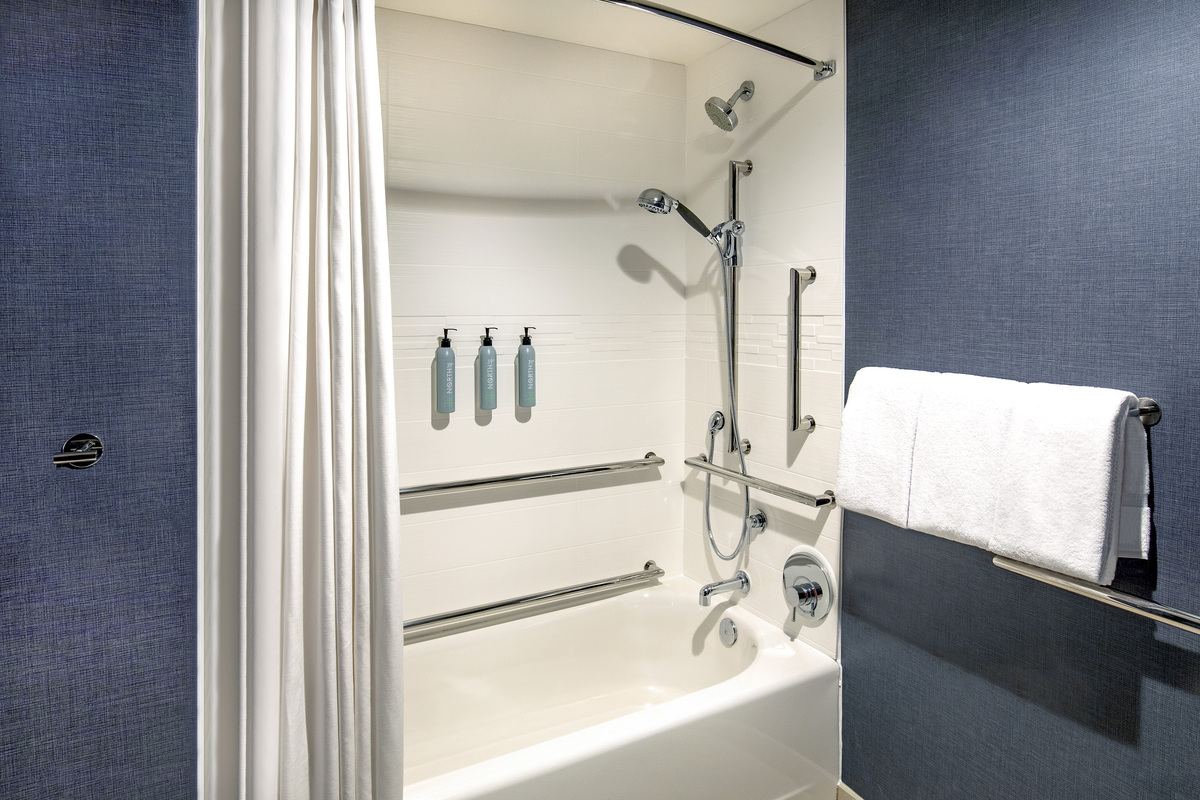Skift Take
Sometimes there needs to be a carve out in the biggest design trends to take accessibility issues into account.
As the co-founder of the accessible design firm Motionspot, Ed Warner doesn’t think the parameters of the Americans With Disabilities Act and other regulatory initiatives are comprehensive enough.
“Just 8 percent of (people with disabilities) use a wheelchair,” Warner said. “We help people think about what they are doing for the other 94 percent of people with many other types of physical, sensory and cognitive access needs, too. Regulations in the UK and (U.S.) are fixated around wheelchair use, but there’s little or no guidance surrounding designing around age.”
The senior population is expected to double worldwide in the next 25 years, and that group has money to spend as well as a sense of adventure. However, design considerations for seniors largely fall short, said Warner, whose work at Hotel Brooklyn in Manchester, England earned the property one of the UK’s most prestigious hospitality awards, a Catey, last year.
Warner and his accessible design team working at Hotel Brooklyn examined several factors surrounding lighting, hearing and mobility that typically affect a senior audience. Motionspot added removable grab bars in bathrooms, enhanced task lighting, and researched bathroom fans that wouldn’t interfere with hearing aids. The team also removed en suite steps, and designed a spacious restaurant with a myriad of seating options to accommodate canes, mobility aids, and large strollers, for instance.
One of the most notable design moves regarding accessibility comes from bucking the growing trend of hotels moving away from a front desk model in lieu of contactless check-in. Hotel Brooklyn features a wheelchair-height reception desk and cushy leather chairs for resting, although Warner stated that seniors show varying physical and technological capabilities, and attitudes. Keeping a more traditional model as an option “isn’t ageist, but inclusive,” he said.
New data show that the redesign has worked. Hotel Brooklyn has seen its monthly revenue increase on average $12,500 (£10,000) thanks to a surge in bookings and new events sparked by the redesign.
As color contrast is one of the most important considerations for a senior audience, The Brooklyn also moved away from the earth-toned, monochromatic standard popular in some hotels.
Meanwhile, the Residence Inn by Marriott Boston Cambridge in Cambridge, Massachusetts had another audience in mind. It underwent a $15 million renovation, part of which included making itself more welcoming for autistic guests. Marketing Manager Jennifer Abraham said the hotel installed Sensory Suites that feature calming shades of blue.
Sensory Suites are designed to assist children with not only autism but attention deficit hyperactivity disorder and other disabilities; they might need help relaxing or sleeping. Each suite contains a projectable changing light, HugglePod, and a sensory mat. It also provides take home gifts such as a worry rock, fidget spinner and the book “Why Does Izzy Cover Her Ears,” in which the main character is on the spectrum.
“Lots of people come here and stay long-term because of the hospitals — obviously the area has some of the best hospitals in the world,” said General Manager Jennifer Pendola. “You get to know the families, especially all of the children.”
While the sentiment behind accommodating guests’ needs is encouraging, some of the color choices may not be as spectrum-friendly as suggested, said Massachusetts-based teacher Robin Perron, whose students are primarily autistic.
“Less color, less pattern is typically more calming for kids with autism,” she said. “The sensory items are a nice gesture, but those can also be specific to a (certain) kid’s size.”
Perron suggests that more hotels instead consider offering one- and two-bedroom family — and budget-friendly — suites.
“You don’t want to have two separate rooms,” she said. “And when you have a child with special needs, you need even more space than your average traveler with gear.”
As a mother of two children with special needs, Perron’s most important concern doesn’t pertain to souvenirs or swimming pools.
“Having staff trained to deal with kids with sensory needs and are responsive to how they’re feeling, (such as) if they don’t want to say ‘Hi’ or make eye contact on a particular day,” she said. “Understanding these kids is what’s going to really impact a family’s stay.”
Perron might get her wish, if a Marriott program gains traction. The company rolled out enhanced cultural competency training for its staff throughout North America at the end of last year.
“We are training our teams to say ‘Here’s what you do to adjust the bed for someone (with a disability),’ but it’s also very important that it’s done with empathy,” said Apoorva Gandhi, senior vice president of multicultural affairs, social impact and business councils for Marriott International.
“Hospitality is empathetic by nature. It’s in our blood. But taking the extra steps to communicate cultural competency when it comes to welcoming those guests with disabilities (is what) I’m really proud of,” Gandhi said.
CORRECTION: The article has been updated to say 8 percent of people with disabilities use a wheelchair.
Have a confidential tip for Skift? Get in touch
Tags: accessibility, disabilities, hotels, marriott
Photo credit: Rails in tub at the The Residence Inn by Marriott Boston Cambridge. Some of the rooms are designed to help guests with disabilities. The Residence Inn by Marriott Boston Cambridge
